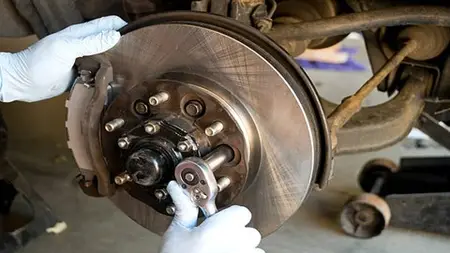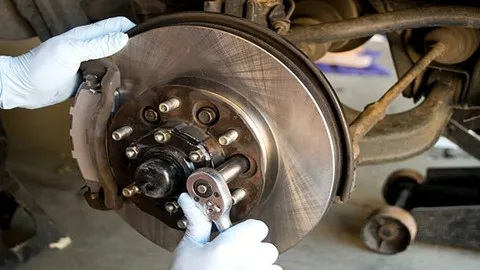Car Brake Repair Fundamental
Published 11/2024
MP4 | Video: h264, 1920x1080 | Audio: AAC, 44.1 KHz
Language: English | Size: 2.79 GB | Duration: 1h 41m
Published 11/2024
MP4 | Video: h264, 1920x1080 | Audio: AAC, 44.1 KHz
Language: English | Size: 2.79 GB | Duration: 1h 41m
How to fix a brake fluid leak, How to troubleshoot your brakes, How to change the brake pad in your car etc.
What you'll learn
How to fix a brake fluid leak
How to troubleshoot your brake
How to change the drake pad in your car
An expert approval guide to replacing brake rotors like a pro
How to check brake pad for wear
How to fix noisy brakes
Requirements
Desire to repair your own car break
No special requirement
Description
Your automobile's brake system may be one of the most important safety systems in your vehicle. When you apply pressure to the brake pedal, the master cylinder forces brake fluid via the brake lines into the wheel cylinders or calipers pistons. This activates the brake shoes or pads, which rub against the rotor or drum, and this slows your car down. You should check and service your brake system every six months to keep it in working order. While the car is on the ground, you should use a lug wrench or an impact wrench to loosen the lug nuts. Doing it this way prevents the tires from spinning. This helps break the lug loose more efficiently and more safety. There are many things that can go wrong with your brakes. All these problems require immediate attention, but first you have to find out exactly what's going on with your brakes. If you hear screeching, metallic sound when you apply your brakes, the pads are probably wearing out and need replacement. If your brake pedal feels soft and doesn't stop the car right away. you may have a fluid leak or air in the brake system. If your pedal feels too stiff, the vacuum booster could be failing. If you discover any of these problems, take your car to a mechanic as soon as possible to have them fixed.
Overview
Section 1: Introduction
Lecture 1 Introduction
Lecture 2 What is a brake
Lecture 3 Types of brake
Lecture 4 Characteristics of brakes
Lecture 5 Brake pad
Lecture 6 How to fix noisy brake
Lecture 7 When you should change your brake fluid
Section 2: How To Troubleshoot Your Brakes
Lecture 8 Fixing noisy brake pad
Lecture 9 Finding the source of soft brakes
Lecture 10 Dealing with a hard brake pedal
Lecture 11 Diagnosing other issues
Section 3: How To Fix A Brake Fluid Leak
Lecture 12 Finding the brake
Lecture 13 Rebuilding brake caliper
Lecture 14 Replacing a wheel cylinder
Lecture 15 Replacing steel brake lines and hoses
Lecture 16 Replacing the master cylinder
Lecture 17 Bleeding air from the brake system
Section 4: How To Change The Brake Pads In Your Car
Lecture 18 Exposing the brake pads
Lecture 19 Changing the pads
Lecture 20 Bleeding the brakes
Section 5: An Expert Guide To Replacing Brake Rotors Like A Pro
Lecture 21 Removing the old rotor
Lecture 22 Installing a new rotor
Lecture 23 Performing optional brake maintenance
Section 6: How To Check Your Brake Pads For Wear: Visual Signs And Measurement Tips
Lecture 24 How to check your brake pads for wear
Drivers, mechanics, car owners, transport companies, companies, individuals, teachers, directors, managers, consultants, geneeral public



